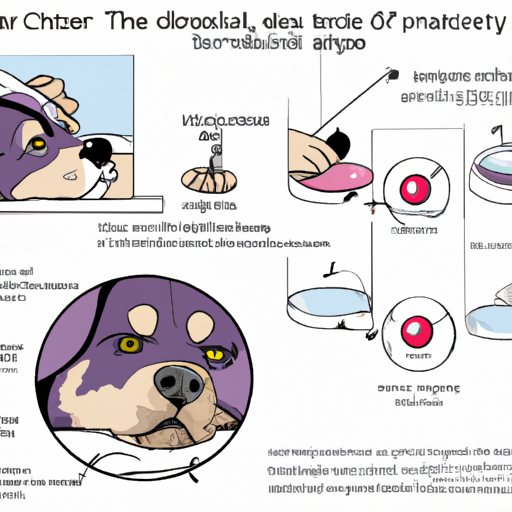Cherry eye is a common condition in dogs, especially in certain breeds. It occurs when the third eyelid’s gland prolapses, creating a noticeable red bulge in the corner of the eye. It’s not life-threatening, but it can cause discomfort and potential complications. So, how do you treat cherry eye in dogs? Let’s explore.
Understanding Cherry Eye
Cherry eye, also known as nictitans gland prolapse, is a condition that affects the third eyelid of dogs. This part of the eye has a gland that produces tears to keep the eye moist.
- Cause: The exact cause of cherry eye is unknown, but it’s thought to be a combination of genetic and environmental factors. Some breeds are more susceptible, including Bulldogs, Beagles, and Cocker Spaniels.
- Symptoms: The most obvious symptom is a red, swollen mass in the corner of the eye. Your dog may also blink excessively or have discharge from the eye.
Initial Steps for Treatment
When you first notice the symptoms of cherry eye in your dog, there are a few steps you can take:
- Don’t Panic: While it may look alarming, cherry eye is rarely a medical emergency. However, it’s important to address it promptly to prevent further complications.
- Contact Your Vet: Arrange an appointment with your vet to confirm the diagnosis and discuss treatment options.
Treatment Options
There are several ways to treat cherry eye, ranging from conservative management to surgical intervention.
- Massage and Cold Compress: In some cases, a gentle massage and cold compress may help to reduce the swelling and return the gland to its normal position. This is more likely to be successful if the cherry eye is a recent development.
- Medication: Your vet may prescribe a topical anti-inflammatory or antibiotic ointment to reduce swelling and prevent infection. However, this is usually a temporary solution and does not correct the underlying issue.
- Surgery: The most definitive treatment for cherry eye is surgery. This can involve either repositioning the gland back into its normal location or removing it entirely.
| Treatment | Pros | Cons |
|---|---|---|
| Massage & Cold Compress | Non-invasive, immediate relief | Temporary, requires patience and consistency |
| Medication | Can reduce swelling and discomfort | Does not fix the underlying issue, possible side-effects |
| Surgery | Permanent solution, high success rate | Invasive, potential complications, cost |
Post-Treatment Care
After treating cherry eye, it’s important to monitor your dog’s eye for any changes or signs of discomfort. Ensure your dog avoids scratching or rubbing the eye. In case of surgery, follow your vet’s instructions for post-operative care.
Preventing Recurrence
Unfortunately, there’s no surefire way to prevent cherry eye from recurring. However, keeping your dog’s eyes clean and providing a healthy diet can support overall eye health.
FAQ
Q: Is cherry eye painful for dogs?
A: It can cause discomfort, but it’s not usually painful.
Q: Can cherry eye go away on its own?
A: In some cases, it may resolve spontaneously, but this is rare.
Q: Can cherry eye be prevented?
A: There’s no proven way to prevent cherry eye, but regular check-ups can help catch it early.
Q: Is cherry eye covered by pet insurance?
A: Coverage varies, so it’s best to check with your provider.
Q: How long is the recovery after surgery?
A: Depending on the type of surgery, recovery may take a few weeks.
Remember, while cherry eye may seem scary at first, it’s a condition that can be effectively managed with prompt attention and care. Always consult with your vet for the best treatment plan for your furry friend.



